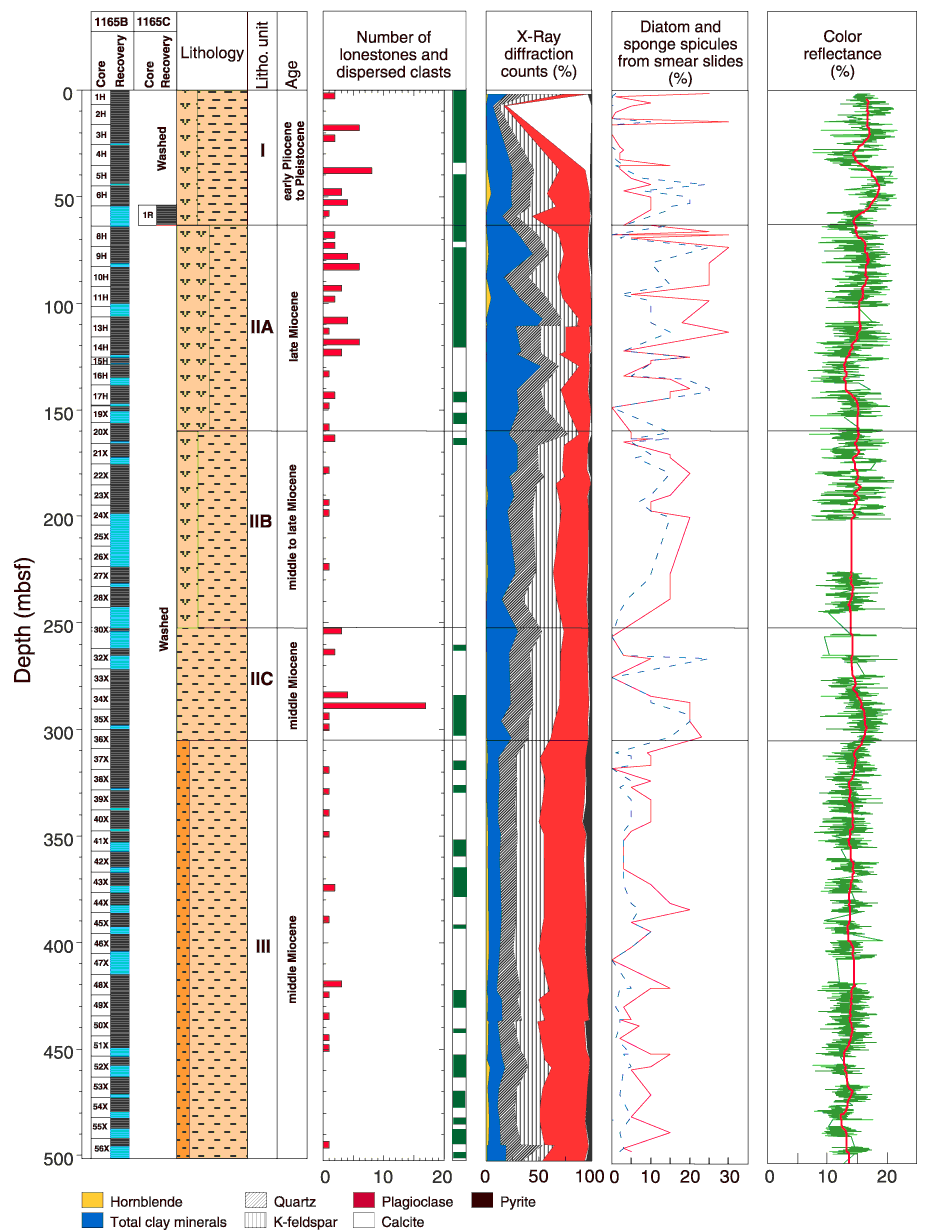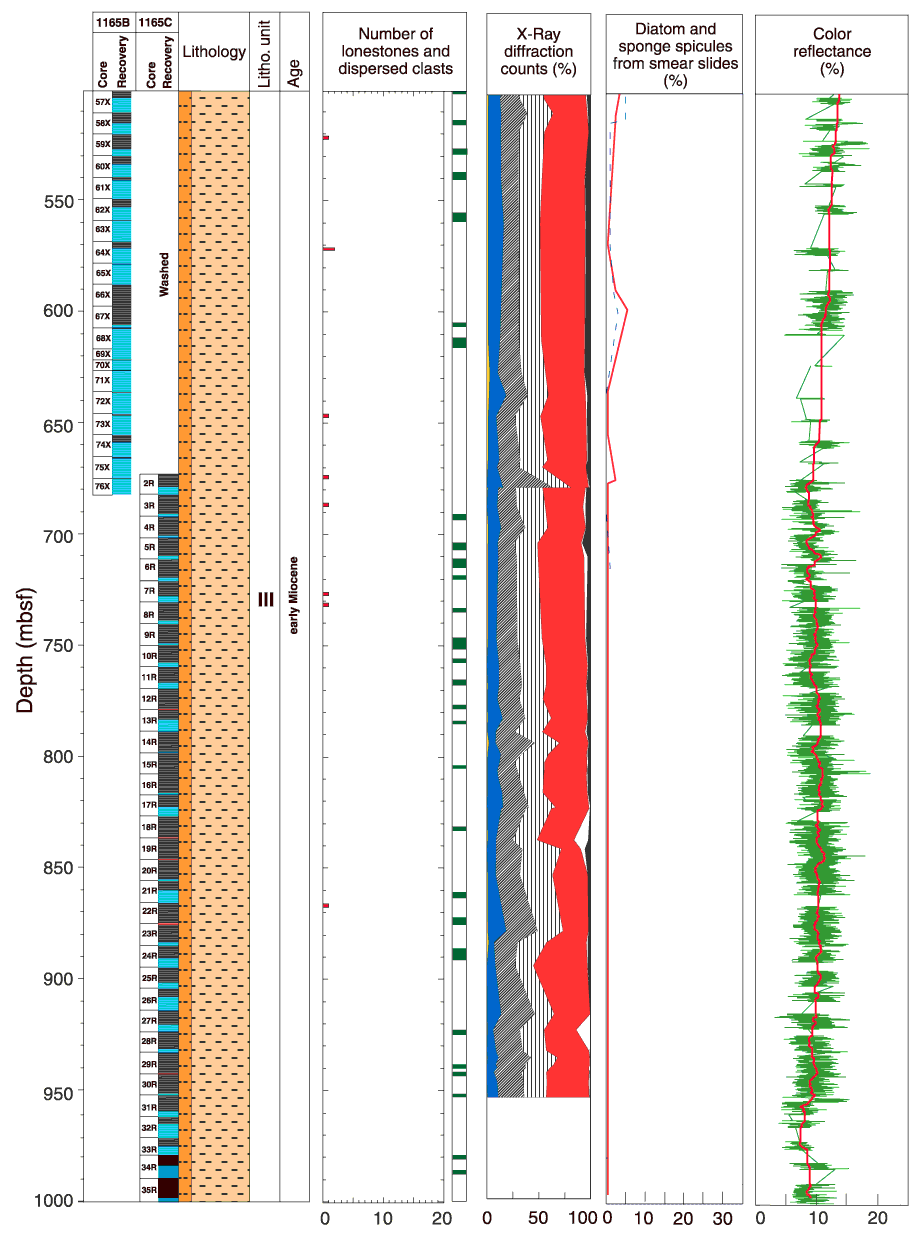Figure F6. Composite stratigraphic section for Site 1165 showing core recovery, a simplified summary of lithology, lithostratigraphic unit boundaries, and age. Also shown are the distribution of lonestones and dispersed clasts, mineral abundances identified by XRD, the percentage of diatoms and sponge spicules from smear slides, and color reflectance. The bar graph shows the distribution of isolated lonestones (>5 mm) downhole. The vertical bars on the side of the column right show the distribution of dispersed grains and granules (<5 mm). XRD shows the percentage of most abundant minerals. This graph was plotted using the methods of Forsberg et al. (1999). In the smear slide graph, solid line = diatoms and dashed line = sponge spicules. The thin line in the color reflectance plot shows the percent light reflectance (L*) downhole. The thick line is a 200-point moving average. The spectrophotometer light-reflectance data were measured at 5-cm intervals for core from Hole 1165B and at higher resolution (2-cm intervals) for core from Hole 1165C to better characterize the highly fractured cores. The data illustrate several lithologic distinctions at Site 1165. A general trend of darkening with depth can be recognized, and light reflectance has higher variability in the upper 500 m. Lithologic symbols are explained in Figure F3 in the "Explanatory Notes" chapter.


![]()